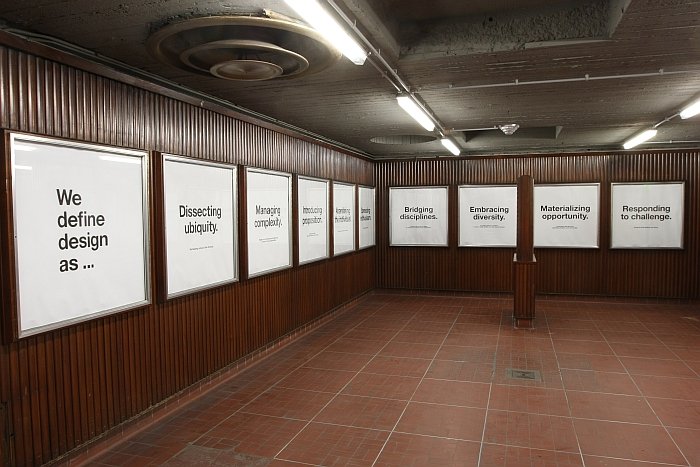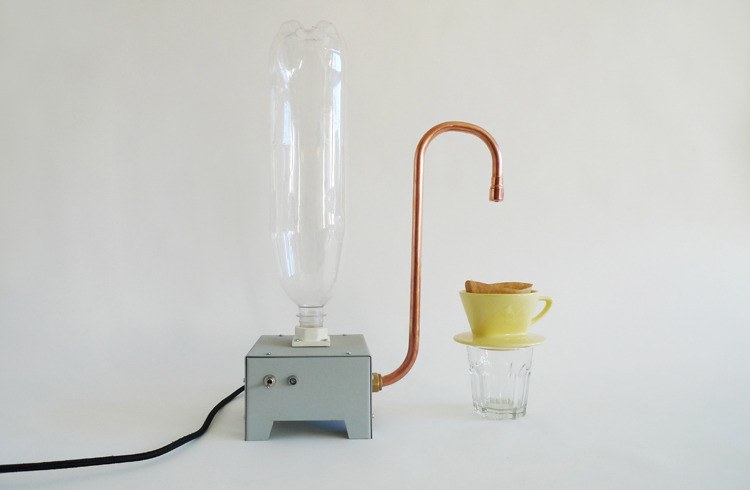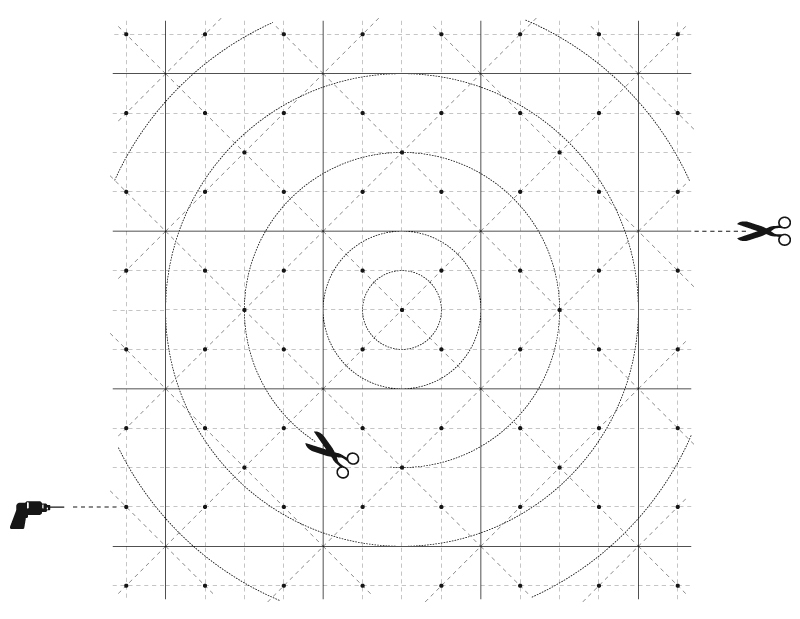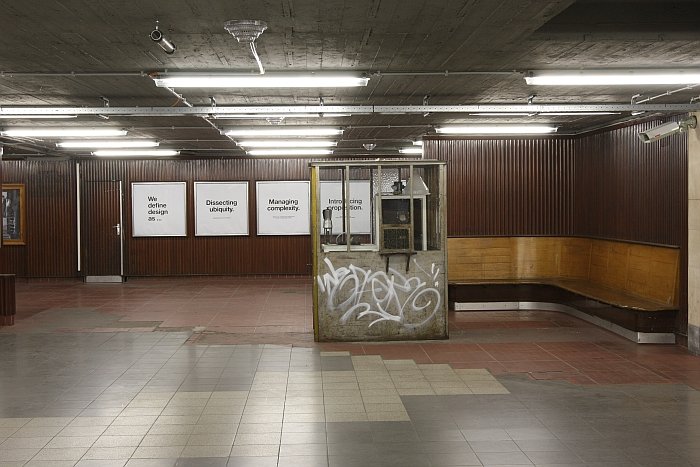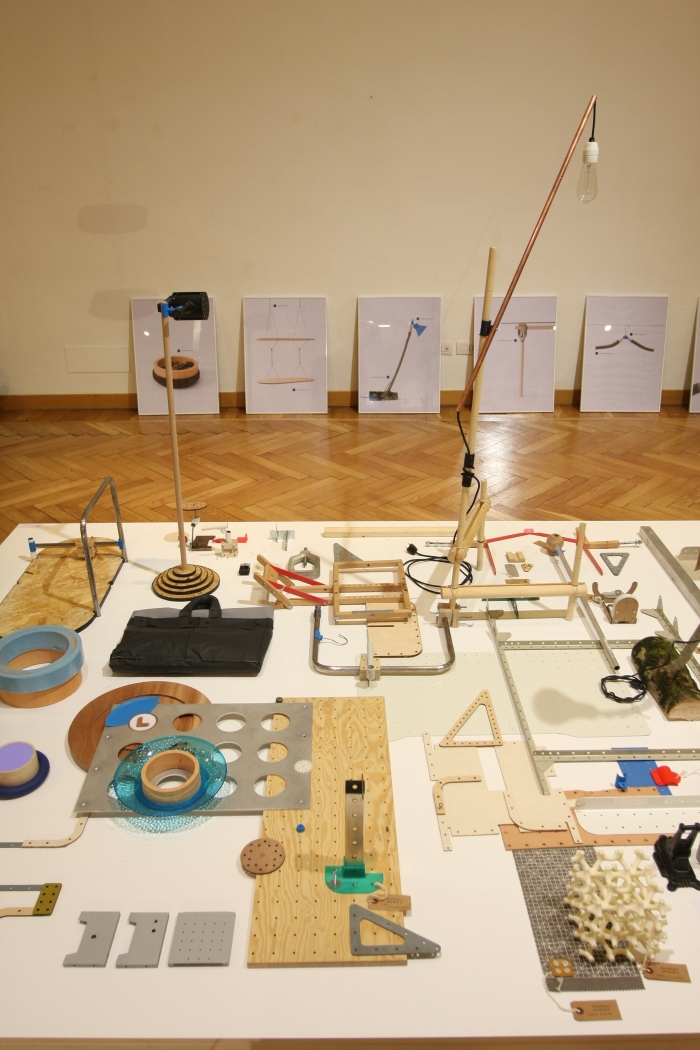In the past we've often noted the number of "classic" furniture designers currently working in Belgium, and how in comparison to their near cousins in Holland, Belgium is home to noticeably fewer designers who take a more conceptual, theoretical approach to their work. There are of course exceptions, such as Brussels based designer Thomas Lommée.
Following his graduation in 2005 from the Man and Living class at Design Academy Eindhoven Thomas Lommée spent a year in Toronto at the George Brown College's Institute without Boundaries before moving to Brussels in 2007 where he established Intrastructures, a multi-disciplinary design and research studio. In addition to developing his own projects Thomas Lommée has also cooperated with numerous international museums, companies, cultural institutions and design studios, and teaches at Ecole Nationale Supérieure de la Creation Industrièlle, ENSCI, Paris.
We first became aware of Thomas Lommée's work without actually understanding what we were looking at. And even though the object in question wasn't by Thomas Lommée.....
It was Milan 2012 and the exhibition Belgium is Design at the Triennale Design Museum featured an open source water boiler, a truly delightful object and one which instantly caught our attention and imagination. As an open source water boiler. And nothing more. What we didn't know at that point, and didn't actually understand for a year or so, was that the water boiler had been created by Amsterdam based designer Jesse Howard according to Thomas Lommée's OpenStructures system.
An open source modular construction system OpenStructures is Thomas Lommée's attempt to transfer the participatory principle common to software development to hardware development; a community of users create components which can be combined in any number of ways to create any number of objects, be that a table, shelving, a lamp, or even a water boiler. In addition to being used for objects the OpenStructures system has also been used for interior and exhibition design projects, while an extension to architecture is in many ways inevitable. Central to the OpenStructures concept is a 4cm x 4cm grid which defines not only the dimensions of individual components but also connecting points, and thus ensures a universal compatibility.
In 2015 Thomas Lommée was one of the lectures chosen for the Rethink the Modular initiative undertaken to celebrate the 50th anniversary of System USM Haller. The project OpenStructures (OS) Relatives which Thomas developed with his ENSCI students, was for us the stand out contribution to Rethink the Modular largely, and as we noted from the exhibition in Milan, because it "freed the term “modular” from the need to be composed of repeating and/or interchangeable units. And thus not only rethought the modular but redefined it for a post industrial society." Something which applies just as easily to OpenStructures in general, and is in retrospect what attracted us to Jesse Howard's water boiler; despite its obvious analogue craft provenance, it is an object from and for the digital age.
We met up with Thomas Lommée in Brussels to discuss OpenStructures, the potential energy of modular systems and rethinking modular design, but began, as we begin all such interviews, by asking, why design?
Thomas Lommée: From a very early age I knew that I wanted to do something with design. I have always liked to study objects, to take them apart, to understand them and just to be busy with things. And then when I was 16 or so I was in Amsterdam and I saw a doorbell made from two upside down wine glasses*, and that really impressed me because it was amusing and clever and not intimidating; I remember thinking I could also do that, and so realised that design wasn't only complex things like streamlined cars but could also be a simple idea which anyone can have and develop into a product which brings a little joy into peoples' lives. And that is now what I try to develop.
smow blog: For us the central features of your work are modularity and open source, which came first?
Thomas Lommée: The modularity
smow blog: Why?
Thomas Lommée: Because modular design is one of the basic principles of sustainable design. When something is modular it can be easily adapted, can evolve over time and react to change, which makes it resilient. Situations are always changing and so if your objects can also change you can use them longer, you can change parts, change functions and so you have something which is sustainable and endlessly flexible.
smow blog: And where did the Open Source element come from?
Thomas Lommée: Modularity isn't a new idea in design it is something that many architects and designers have experimented with over the decades and so I looked at how I could, in a way, update modularity for the 21st century, which for me meant asking how would a modular system work within a networked context. At Eindhoven I was very much concerned with such thoughts and graduated with a book called 2.5D which is a collection of ideas on the border between 2D and 3D, so between digital and analogue and thinking about what could happen on this border, a lot of the work contained in my book would now be considered Internet of Things, and I see OpenStructures as being very much within that same field. And from such thoughts it was a relatively short step to developing a modular system according to a participatory, wikipedia, model.
smow blog: And so did OpenStructures as a project then also begin in Eindhoven?
Thomas Lommée: Not exactly. After graduating from Eindhoven it was clear to me that just starting to design products was only going to add to the problems of the world and wasn't going to be a solution. And as designers our job is to generate solutions. And so at that stage it was clear to me that we shouldn't design objects but rather the systems which generate objects, and examine how objects are produced, used, re-used, recycled and then make it easy for people to do that. After graduating I spent a year at the Institute without Boundaries in Toronto where I was part of a multi-disciplinary research group exploring questions of social housing. The group included, amongst others, an architect, artist, economist, engineer, and each brought a proposal from their area of expertise to the project. My proposal was a modular construction system called Open Source Structures, which for me at that time was largely about cupboards and storage spaces. When I returned from Canada I spoke with Jan Boelen from the z33 gallery in Hasselt, he liked the project and gave me a budget and two years to develop an exhibition of objects built according to this system. And so then I had to do it, I had to develop it.
smow blog: When you talk about cupboards and storage spaces, that means initially it was a proper furniture project....?
Thomas Lommée: Yes, yes.....
smow blog: .... which then evolved into this much wider, all encompassing project....
Thomas Lommée: Exactly. And now, for example, we have asked architects to think about how one could develop it into a construction system or we're looking at kitchen systems. In addition OpenStructures is about having physical workshops where people can come and make parts, find parts, adapt parts and also cooperate with others on developing new parts or new uses. And ideally over time also start developing different kinds of behaviour, a different attitude towards products and those objects which surround us, so that people start to see possibilities in things, to see variable functionality rather than accepting what a manufacturer tells them something is and how it is to be used.
smow blog: A spirit of free functionality is an interesting point, you partook in the USM project "Rethink the modular", which obviously you have, but what are your views on the USM system?
Thomas Lommée: For me System USM is an interpretation of modularity specific of that time, it is a very industrial view on modularity, this belief that you design one component, produce it a million times and build a city with it. And that is how modularity has been understood for decades, and that works up to a certain point, but after that point it becomes inhumane, you become intimidated by one way of thinking, one solution, one material. In such an industrial system there is a lack of variety, which is the advantage of OpenStructures.
smow blog: This variety in OpenStructures is largely enabled by the 4x4 grid, what is the thinking behind 4x4?
Thomas Lommée: I knew I needed standards and so began measuring all manner of things. 60x60 is a standard unit in furniture, for example, kitchens, but also in packaging and transport, and then I worked backwards and came to 4x4, essentially 4 cms is a nice thickness for wood furniture, whereas for metal furniture 2x2 is good, and so with a standard of 4x4 you have good base which you can then scale up or down as need be.
smow blog: Which we take to mean that in terms of open source generally you'd favour a future in which we move away from everyone doing their own thing and a greater concentration on globally standardised forms.....
Thomas Lommée: I think everyone should do what they want do, however the more you collaborate the more one approaches a need for shared standards, it's a natural progression.
smow blog: OpenStructures is an open source system, but is the idea purely to work with a lay community or also with a professional partner?
Thomas Lommée: Both, but perhaps most important is a producer. The difference between software and hardware is that hardware doesn't spread itself. Yes, you can download the files and print or mill the parts yourself, but that is currently still very niche and so the plan is to distribute the system as products, for example as a lamp which is sold as a lamp, can be used as a lamp but which has this second life. When you no longer need the lamp you can quickly check online which other components are available and what you can create in place of the lamp or alternatively, if you just don't want it any more, who does want it? Who is looking for the components that I have here.
smow blog: Reuse rather than recycle.....
Thomas Lommée: It's like with old timers. What for one person is a wreck is for someone else a feast of spare parts and possibilities.
smow blog: What is the current status with OpenStructures?
Thomas Lommée: Currently we are trying to find partners, to bring the project to the next level, bring it from research to realisation, to produce parts so that it can spread, as a project it needs to spread to exist.
smow blog: Which we take to mean you're convinced you'll find a company to take on such a system, knowing that it's meant to be re-used and that you can also make the components yourself?
Thomas Lommée: I believe so yes, because as a system it works across so many fields, and not just in a domestic context. We, for example, also use the system for exhibition design commissions, and similarly it can also be used to construct variable trade fair stands or shop display systems. And as a system it doesn't necessarily have to be sold, it could also be leased. A student, for example, or someone who is only going to be based in a location temporarily could lease components, use them as they want and then return them, which of course offers alternative business models for the furniture industry.
smow blog: And so you're also convinced that people will understand the system and the idea behind it....?
Thomas Lommée: Yes, and even if they don't it's not such a problem, they still have, for example, a nice lamp. And in any case I'm not a big believer in the idea that just because something is modular you have to reconfigure it. The potential energy with a system is the most important component....
smow blog: And briefly to end, you've been based in Brussels since 2007, is Brussels a good city to be based as a designer?
Thomas Lommée: In terms of OpenStructures I'm not so sure if Brussels is the best place, I think I would get on much better somewhere like Berlin. And in general, as a city Brussels has a sort of non-identity, it is a mix of identities, its problematic and therefore potentially interesting and is cheap, at least relatively and while I'm certain there are better cities to be based in, Brussels is developing and getting better. Over the past decade things have definitely improved and today there is quite a lot happening in the city in terms of design. But its all quite fragmented, there is no central "scene", but then that is very typical Brussels!
More information on OpenStructures can be found at http://openstructures.net/ and more information on Intrastructures and the other projects with which they are involved at www.intrastructures.net
* Later Thomas realised what he had seen was the Bottoms Up Doorbell by Peter van der Jagt for droog.
